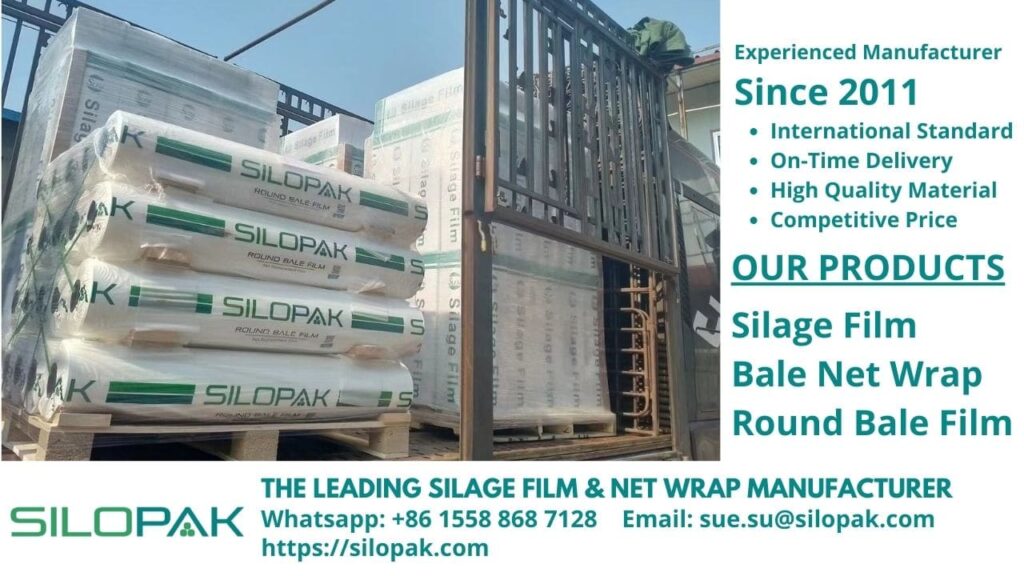
To optimize the performance and quality of livestock industry components, producers need materials with high UV resistance. However, do you know what UV resistance is and why it is so important? Here comes the amount of information you need.
contents
Reasons for the Importance of UV Resistance
In the livestock industry, so that livestock do not always depend on the availability of fresh feed, feed mixtures are usually preserved for a long time. One of them is through the silage process. Silage is made using several industrial components, mainly film.
The film is made of plastic which is very susceptible to damage from ultraviolet (UV), especially if exposed for a long time. Therefore, experts then created plastics with UV-resistant materials such as polymers. UV resistance itself refers to the ability of a material to withstand the absorption of UV radiation, including sunlight.
So, How Did High UV Resistance Become So Important?
Exposure to the sun’s UV rays for a long time can break down the chemical bonds in the polymeric materials contained in plastic so that they are damaged and destroyed more quickly. This phenomenon is known as photooxidative degradation or also called photodegradation.
Photodegradation can cause discoloration and degradation at the end. This phenomenon can be identified by components that turn yellow and white or commonly known as ‘calcification’. Liming plays a major role in the loss of impact and tensile strength so that the plastic becomes brittle, cracks easily, and even has holes.
The problem is, in making silage, damaged protective plastic will have fatal consequences, that as damaging the feed composition due to the entry of free radicals and the occurrence of photochemical reactions. Not only does it change the color and substance in the silage, but it destroys antioxidants, oxidizes lipids, digests proteins, and produces undesirable odors and tastes.
Besides that, damage caused by prolonged exposure to UV light also harms elongation, namely the ability of a material to prevent changes before irreversible deformation occurs.
With UV resistance materials, not only photodegradation and elongation can be prevented, but also mechanical properties will remain intact by maintaining elasticity, strength, and hardness, and not easy to brittle.
In the agricultural industry, a higher UV resistance is especially important for applications and components intended for outdoor use.
A Type of Polymer with UV Resistance
Even though it is said to have high UV resistance there are almost no materials that are truly resistant and protected from UV rays. Polymers are macromolecules formed from long chains of atoms called monomers and are often used as materials in everyday life because of their strong, lightweight, and chemically stable properties.
To increase resistance to UV light, most polymers are usually added stabilizers or additives when formed. These stabilizers are often labeled as “UV-stabilized” ingredients which are added directly to the resin.
That is why polymers have many types. Different types will offer different levels of UV resistance, which can be lower or higher.
As an illustration, polypropylene is a type of polymer with very low ultraviolet resistance. If this type is exposed to high amounts of ultraviolet light, its components will show damage more quickly than other types of polymers.
Conversely, there are also types of polymers designed to have higher UV resistance than polypropylene. For example, Polytetrafluoroethylene (PTFE), which is strong enough, is used as a component for outdoor applications such as window film and automotive parts.
3 Polymers with High UV Resistance
Apart from PTFE, several other polymers are known to have the highest UV resistance.
Linear Low-Density Polyethylene (LLDPE)
LLDPE is a mixed polymer derivative in the form of another ethylene and olefin copolymer, popular for its strength, resistance to impact, puncture, and harsh environments. Compared to a similar polyethylene called Low-Density Polyethylene (LDPE), products based on LLDPE are the best choice for manufacturers who want flexibility, increased friction performance, and higher elongation.
It’s no wonder that the toughness of LLDPE is often used as a material for making thinner films, but it doesn’t affect the strength of the material at all. That is also why the use of silage film made from LLDPE is highly recommended in making silage, because apart from being strong and having high UV resistance, this product is also environmentally friendly, can be recycled, and produces less waste.
Polycarbonate
Polycarbonate has the main advantages of being very strong, impact-resistant, durable, offering transparency, and tolerant of significant temperature fluctuations. Products made from polycarbonate are claimed to only experience 3 percent degradation in 10 years.
Therefore, this material is ideal for making various products such as safety windows, helmets, and safety glasses. Given several advantages, the selling price of polycarbonate tends to be more expensive than other polymer materials which also have high UV resistance.
High-Density Polyethylene (HDPE)
Although not as strong as polycarbonate, HDPE can provide the best protection against photodegradation, making it very suitable for outdoor use. This thermoplastic also has the advantage of being softer and more durable than other similar materials and is not sharp and dangerous when broken.
In addition, HDPE is also very strong against acids and bases, alcohol, and can resist graffiti. This resistance makes it not easy to wear out. In everyday life, HDPE is widely used as a material for making plastic toys, pipelines, various furniture, and food containers. However, HDPE is not suitable for high-pressure applications.
